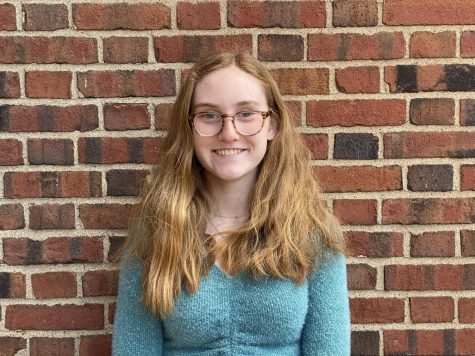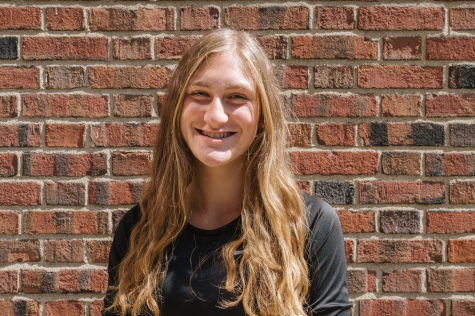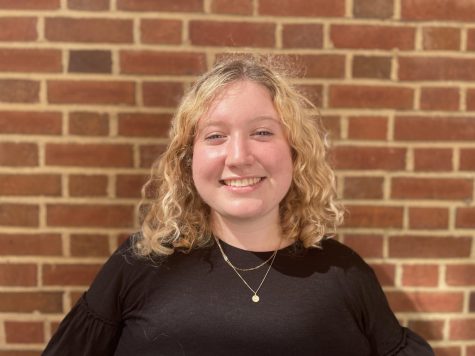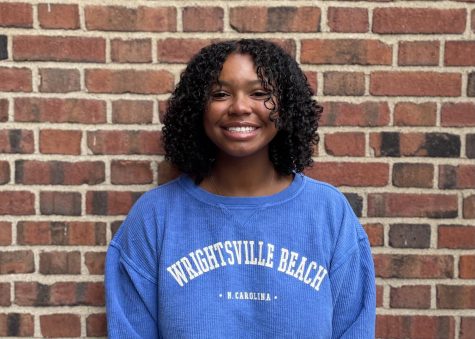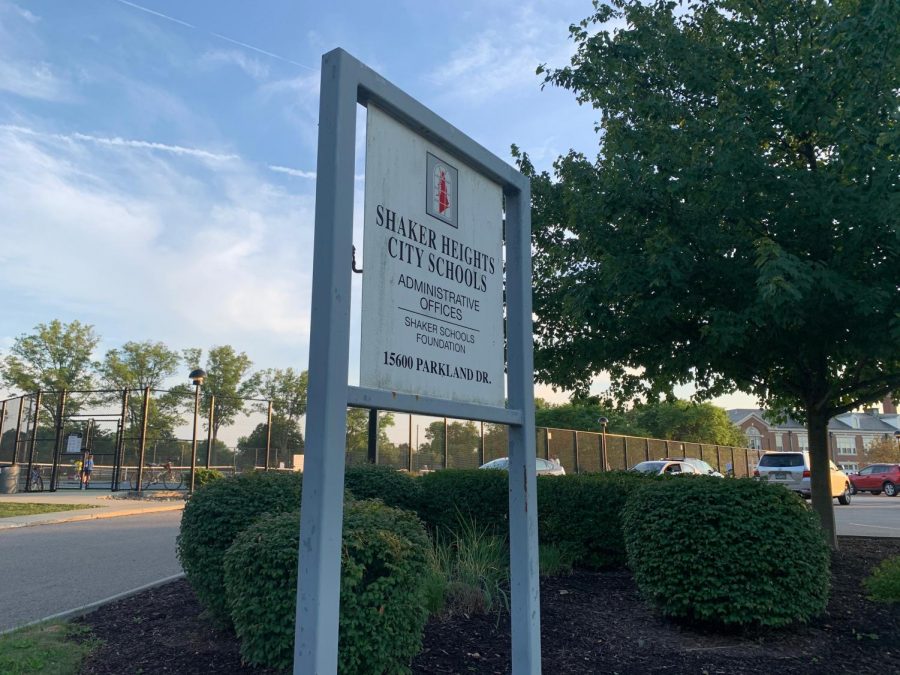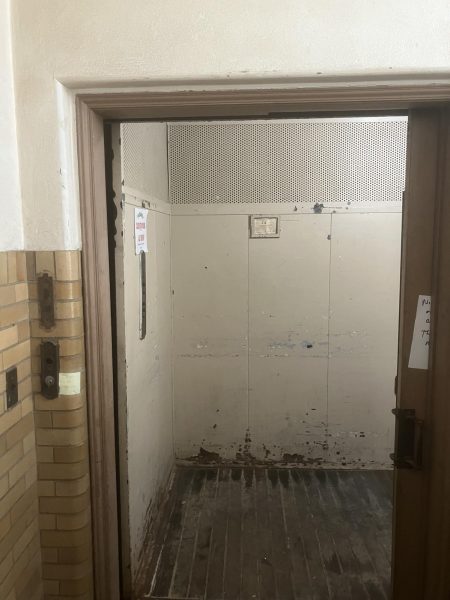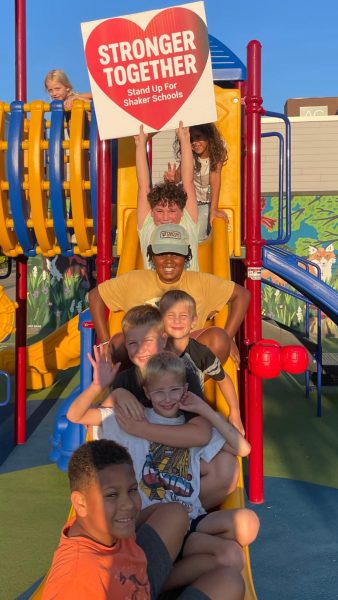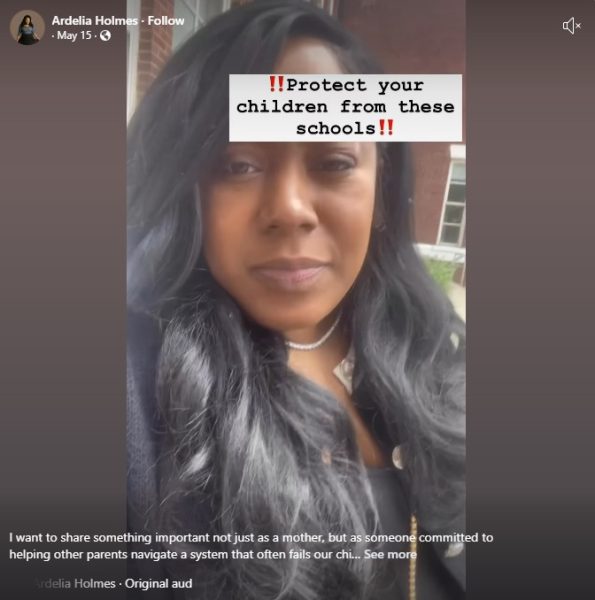SHTA Recommends Full Remote Schedule
Shaker community and teachers express concern about the district reopening plan
After Dr. David Glasner, superintendent, announced the 2020-21 school year plan July 16, the Shaker Heights Teachers’ Association released a letter expressing concerns about students and teachers returning to school buildings and recommending remote learning through the first semester.
The letter, which was shared with the administration July 21 and posted to the SHTA’s Facebook and Twitter accounts, recommended that “the 2020-21 school year begin and remain remote and virtual at least through January 2021” because of the ongoing and increasing spread of COVID-19. The current district plan has students and staff returning to school Aug. 24.
“We did an inventory of things we asked for in June versus where we are at the end of July, and there were too many missing elements for us to recommend face-to-face education in the fall,” SHTA president and high school English teacher Dr. John Morris said. On June 8, the SHTA sent a letter to the administration asking that the district establish proper virus testing and reporting resources and protocols, ensure adequate social distancing and cleaning and provide PPE to students and teachers.
According to the recent SHTA letter, teachers still believe there are too many variables surrounding the return to in-person classes. “Although we appreciate the district’s diligence, and specifically the work of the Re-Opening Committee, in making the school environment as safe as possible, there remain too many unknowns about the spread and impact of the virus,” the letter stated.
The SHTA is also concerned about the district’s social distancing guidelines, especially in its elementary schools, where students would attend school all day, every day of the week, in reduced class sizes. The district’s initial plan would have divided the elementary student population in half and had each group attend school in person every other week. When not at school, students would learn remotely.
“Initially we saw what looked like hopeful distance in the elementary grades — like smaller classes and an A-B schedule, and, then, six-foot distance between teachers and students with regular cleaning protocols,” Morris said. “That continued up until last week’s announcement, which included at the K-4 level a three-foot distance between students and teachers and up to 18 students in an elementary class.
“I would say that made us come to the conclusion that there were too many variables for us to recommend going back face-to-face in August.”
The SHTA also cautioned that the arrival of flu season would create confusion about recognizing COVID-19 symptoms. “Should we start in January, we will have missed the worst onset of the flu and will have established online learning as the norm, making hybridized classes and virtual academy manageable and of high quality,” the letter stated.
The district plan calls on students, parents and staff to self-screen daily for COVID-19 symptoms and to stay home if they detect them. “We find these precautionary measures insufficient,” the SHTA stated.
High school history teacher Amanda Ersek knows she can make adjustments for her students, but worries about how sustained remote learning would affect her daughter as she begins her school experience. “There are some benefits to the high school being virtual, but, you know, as a parent of a possible future kindergartner, I don’t see how she can do a whole semester of virtual learning,” Ersek said.
Morris said teachers can better engage students remotely if they can concentrate on doing so. “I would rather do one job really well than two jobs half as well. I feel my focus will be split between planning for good virtual lessons and then planning for good face-to-face lessons. I would rather plan really good virtual lessons through January,” he said.
Morris said the SHTA’s position was not easy to adopt.
“This was a painful decision. A painful recommendation for us to make,” Morris said. “The majority of our executive board, myself included, have students — have children — who are in the school district, so we know how badly our kids want to see their friends and want to return to normality, and want to go to school. You know, all the natural things you guys should want at this point in your life.
“But we also have to err on the side of keeping our own kids, our own children, safe. So we do not make this decision or recommendation lightly. We know how seismic, how profound this is. That is what I want people to know; this is not an easy choice or recommendation for us,” Morris said.
Ersek understands the SHTA recommendation, but is worried about community response. “I see the value of it in a lot of ways, especially with the spike happening and it not improving. I guess, though, I do think there is a difference in the high school and the elementary schools in terms of what can be done, but I am not a science expert,” she said. “The union letter could have maybe been a little more nuanced. I don’t know what’s going to happen to the community, to be honest.”
The district plans to implement a 3/4 hybrid model of learning for high school students. In this model, the high school population would be divided into three groups limited to 500-550 students. Each group, identified as red, blue or green, would attend school in person three days a week, four hours a day. Class periods would be 50 minutes long. When not at school, students would learn remotely.
Rising junior Gage Weingart said he would like to go back to school, but understands the SHTA concerns. “Regular school sounds more beneficial than online school,” he said. Weingart said that worries about returning to school make sense, however, especially for students and staff who are more at risk.
The blue group of students would learn in person on Monday, Thursday and Friday mornings. The green group would have in-person learning Tuesday, Wednesday, and Friday afternoons. The red group would attend in-person classes on Tuesday and Wednesday mornings, as well as during Thursday afternoons. All groups would spend the remainder of the week divided between synchronous and asynchronous remote learning.
Rising junior Alina Roach said she understands the SHTA’s stance.
“When I heard about the letter, I immediately sympathized with the teachers. When I heard about this, it made me reflect on being a highschooler and the amount of people that I come in contact with every day,” she said. “Teachers — they have to see more students than I would because of each of the changing periods. And we also have to consider elementary school teachers.” Roach worries about how elementary students will be able to maintain social distance.
Ersek said she did not anticipate the difference in district and SHTA positions. “I was a little surprised in the sense that I’ve known the union and the district have been talking, and it really frustrates me as both a parent and a teacher that they couldn’t have come to more of an agreement before the district announcement.”
Ersek worries that her students could struggle with solely online learning. But, she said, even if school occurs online only, she plans on organizing socratic seminars and other group activities.
Students in Pre-K, Woodbury and the middle school will follow an A/B hybrid model in which students will be divided into two groups and attend school in person every other week. When students aren’t in school, they will learn online.
All students have the option to learn online through Shaker’s Virtual Learning Academy. Students in grades K-8 will be taught online by Shaker Heights teachers, but high school students may be taught by a third-party provider monitored by a high school teacher.
The district also released plans to monitor the State of Ohio’s Public Health Advisory System in order to determine the amount of remote or in-person instruction that is safe. The public advisory system codes the severity of COVID-19 presence per county on a scale of one to four, with four being the most severe.
In the event Cuyahoga County reaches either level three with a star, signifying a county is nearing level four, or has reached level four, all learning k-12 would be remote. At level three, students would be phased into in-person learning using the announced hybrid plans. In either levels one or two, the district would look into expanding in-person learning. Cuyahoga County is currently at level three.
Glasner said Shaker will practice health and safety guidelines created by the Cuyahoga County Board of Health. In K-8 schools, to keep physical distance, teachers would move from classroom to classroom rather than students changing classes. Visitors to the buildings would be significantly reduced. All students and teachers will be required to wear masks. Students and families are expected to monitor symptoms of the virus at home and quarantine when necessary.
Rising junior Maddie Lenahan worries about her ability to focus with total remote learning. “I will probably choose hybrid school because I feel like I learn better in a classroom, and being in school is a learning environment whereas when I’m at home, I don’t feel like I’m ready to learn,” she said.
Rising sophomore Sam Dillenbeck said he was unsure if the district would be able to effectively execute their current plan. “When I first saw the plan, I had several questions about how it would work and how it would divide the classes,” he said.
Roach said she is not worried about heading back to school in August.
“Personally, I do feel comfortable going back to school, but that’s only because I don’t think I’m at a higher risk of catching COVID-19,” she said. She said the district is taking appropriate measures to decrease the risk, but those with health concerns should take precautions, such as enrolling in the Virtual Academy.
Morris said that if made to go back to in-person school, teachers will struggle to balance their health, their families’ health and their commitment to their students and may ignore their own elevated risks of contracting COVID-19 and experiencing severe effects.
He said, “We have teachers whose extended family lives with them. We have teachers who have children who are immunocompromised. We have teachers who have conditions where they could seek accommodation, but they don’t want to seek accommodation because they want as much as possible to be the highest quality teacher they can be.”
Rachel Coxon, Brenden Zbanek and Bay Simonelli contributed to reporting.
Comment using your Facebook, Yahoo, AOL or Hotmail account
